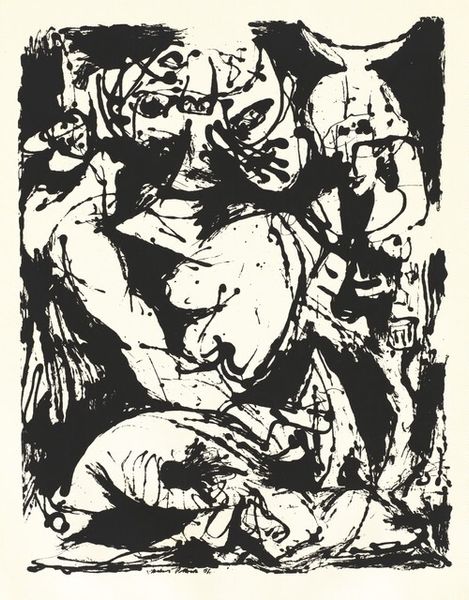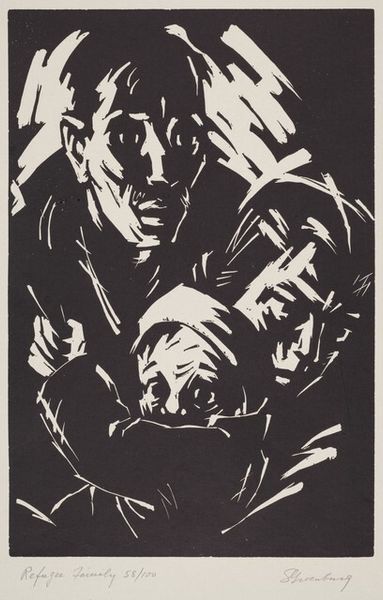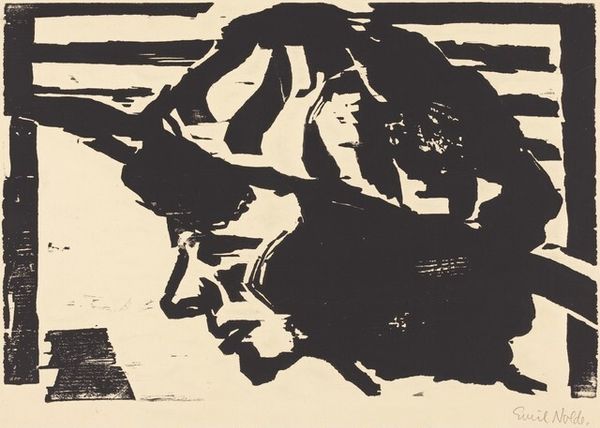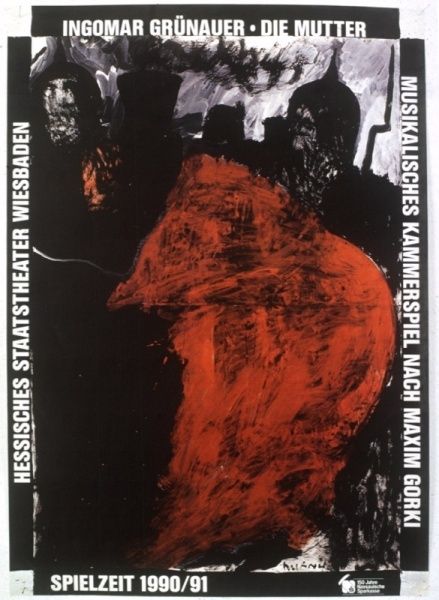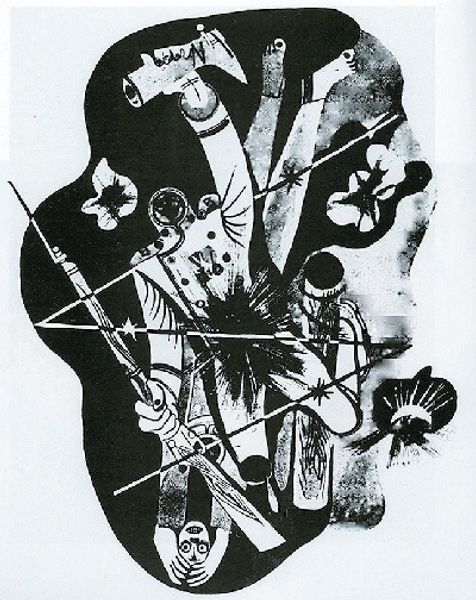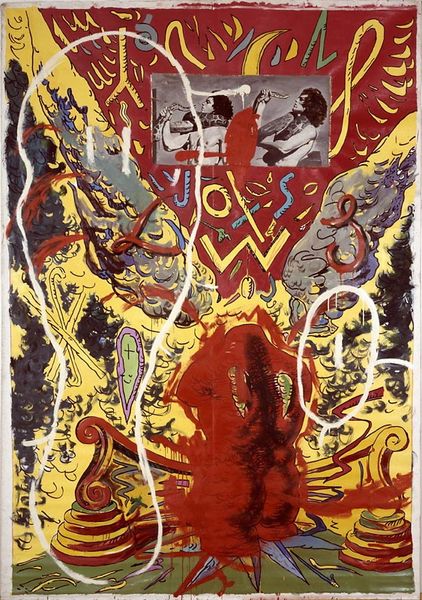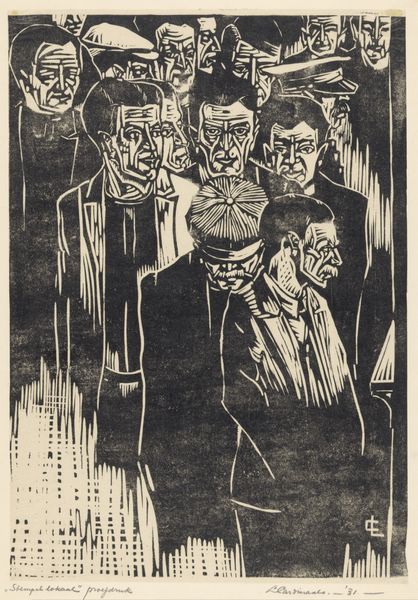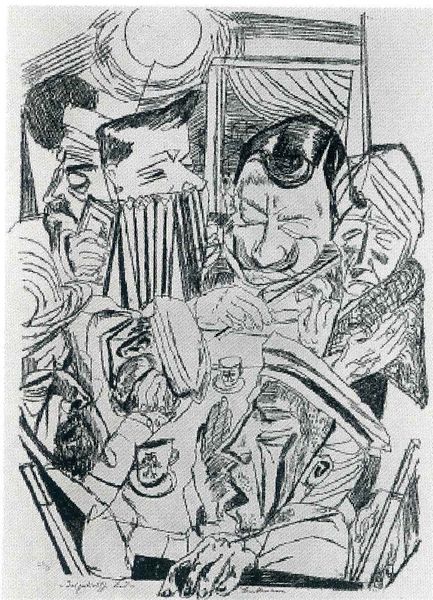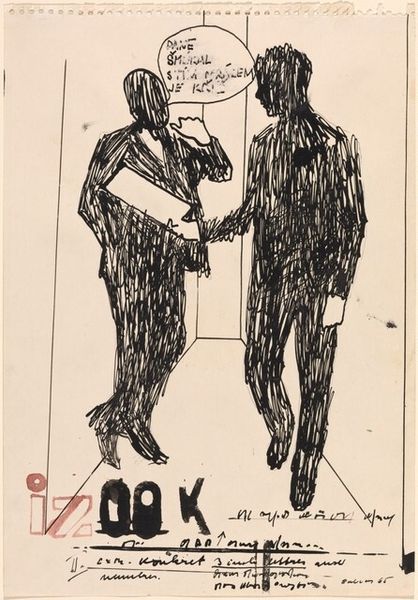
Copyright: © Thomas Kilpper | CC-BY-NC-ND 4.0 DEED, Photo: Tate
Editor: Thomas Kilpper's "The Ring: Andy Warhol and Jean Michel Basquiat Boxing" is a striking image. The stark contrast and the woodcut style give it a raw, almost confrontational feel. What do you see in this piece, considering its materials and creation? Curator: This print’s power lies in its process. Woodcut, a historically working-class medium, elevates Warhol and Basquiat to figures in a symbolic boxing match. The labor-intensive carving contrasts sharply with Warhol’s embrace of mass production, suggesting a critical dialogue about artistic value and the social implications of their work. Editor: That's a compelling point. I hadn't considered the tension between the medium and the subjects' artistic approaches. Curator: Exactly. It makes you consider how the means of production shapes our understanding of these artists and their legacies. It’s less about individual genius and more about the systems that create value. Editor: That perspective really changes how I view the artwork. Thank you.
Comments
tate about 1 month ago
⋮
http://www.tate.org.uk/art/artworks/kilpper-the-ring-andy-warhol-and-jean-michel-basquiat-boxing-p78557
Join the conversation
Join millions of artists and users on Artera today and experience the ultimate creative platform.
tate about 1 month ago
⋮
This is one of a series of unique prints generated from a site-specific work created in an office block on Blackfriars Road, in the London borough of Southwark. Orbit House was abandoned and scheduled for demolition when Kilpper gained access to the building in 1999. He carved a giant woodcut into the mahogany parquet covering the tenth floor, comprising an area of approximately 400 square metres. The woodcut depicted a boxing ring surrounded by an audience of some eighty characters whose names were cut around the edge of the image. The artist derived the portraits from photographs and etchings which he made into slides and projected onto the floor before carving the relief with chisels and a chainsaw. He then made a succession of prints, constituting individual portraits, on a range of new and found materials. He used old curtains left in the building, often sewing several pieces together to make one large, rectangular support. Paper sources include advertising hoarding paper and sheets of purple ultra violet polythene film which Kilpper discovered screening windows in some rooms of the building. The herringbone texture of the parquet features strongly on all the uncut areas of the prints which were executed mainly in black ink using a specially-made giant, cement-filled roller. During the exhibition of the work, the prints were suspended on washing lines above the carved floor. Daylight from the surrounding windows filtered through their semi-translucent supports. Visitors would walk on the carved parquet while looking at the prints. A huge banner was printed from the entire surface (The Ring, collection the artist) and hung on the outside of the building for the duration of the installation. Tate owns twenty-one prints, of which twenty are made on fabric (Tate P78537-P78556) and one, Andy Warhol and Jean Michel Basquiat Boxing, was made on paper. The Ring: Fight On (Tate T07671) is a section of the parquet flooring preserved before the building’s demolition in late 2000.
